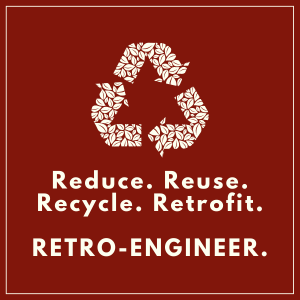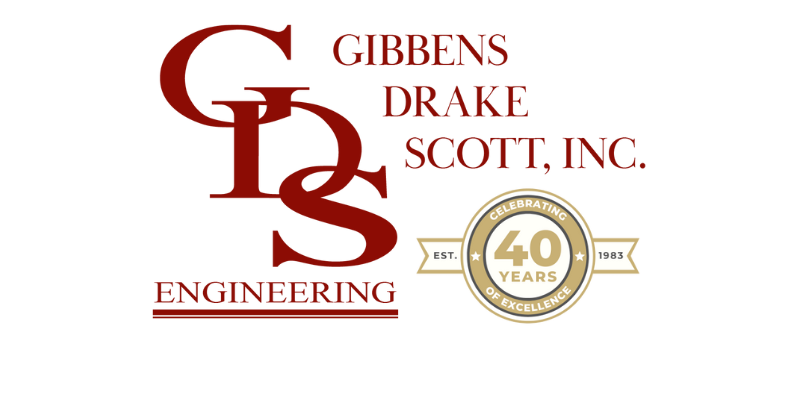Why Replace When You Can Reuse?

Why you should consider retro-engineering your building HVAC systems!
Consider this HVAC scenario…
You contact a contractor or an engineering services company to review options for your planned building upgrade (that has been in the works for a couple of years.) The potential project requires upgrades and layout revisions throughout the existing facility.
The existing drawings indicate that the building was constructed approximately 15 years ago. You feel systems are out-of-date and not providing the comfort and energy performance that you would like to see.
To add to the list of challenges, you want the design and construction to be completed in a short timeframe (to meet the demands of new opportunities), but some of the building complex was constructed with hard (non-removable) ceilings or other physical obstacles that make replacement a challenging puzzle, or perhaps brain surgery.
Sound familiar? This type of scenario seems to be more and more common today. Maybe due to the shortage of patience in today’s On-Demand, Next Day or Same Day Delivery connected (IoT) environment?
Your continued success relies on meeting the needs of your customers and employees! What you need is a forward thinking Retro-Engineer to determine the best possible solution for your needs. Unfortunately, you often get a proposed solution to completely remove and replace the existing systems instead. The “demo and replace” option may seem like the only solution. But in reality, it may just be a fast and seemingly low risk option to price (i.e. the most ‘convenient’ option).
Imagine however, if you could save hundreds of thousands of dollars by simply pausing to ask the question, “is there anything I can reuse; is there another option?”
Today, more and more people are embracing the idea of recycling, reducing waste, upcycling, and employing more sustainable building practices. Consideration should be given to keeping as much of the existing system as possible and retrofitting it to provide an upgraded future.

You’ll need an experienced engineer. That’s where we come in!
The most challenging aspect of retrofitting and refurbishing an existing system is fully understanding the existing system components and how they work together. Not only the layout and general operation, but it’s important to also be aware of any existing issues or limitations with the system. Often the maximum available capacities of existing systems decline over time because they were sized for a future that never fully appeared.
That capacity can be recovered from existing equipment (or supplemented with additional equipment) through improving the original design, matching the original performance capabilities, and installing new control methods that are available today, that were not when originally installed.
Upgrades, timelines, sequencing and costs can be managed with the understanding that the existing system is the starting point. Frequently, systems are abandoned because they did not provide the climate, capacity or comfort that was expected, even from the start. The cause of this poor performance may be due to the limitations of the control systems that were originally installed (or not installed).
Sometimes adjustments of the control processes can produce the new conditions (that you desire) without any new equipment. Many times, simply forcing the AHU to discharge dehumidified air to the facility in lieu of simple modulation of temperature will greatly improve conditions. Installing more up-to-date controls with the properly selected sequences for temperature and humidity control (VAV, Face and Bypass, etc) will transform an old outdated system into a new, more effective and efficient system without much cost and time delay.
When the deadline is short for a project, that should push a designer to make use of as much of the existing systems as possible to prevent the long lead times required for all new equipment. Remember, a fan and a coil in 1995 is not much different from a fan and coil in 2020. The prime difference is the method of installation and control.
There are many parts of a piece of HVAC equipment that do not actually wear out. The motor can be replaced, the bearings can be replaced, control devices can be upgraded if necessary or re-used in a different manner, ductwork in the past was usually sized larger that today and can transport the same volume of air at a lower friction loss.
If a designer can understand the concepts and methods that were applied by the original designer, they can make a very informed and efficient retrofit that meets today’s efficiency standards in a reduced timeframe. Engineers can provide guidance and apply understanding to any retrofit design. An open mind is what makes the difference, for success versus just opening the pocketbook.
We will be sharing a couple of our recent experiences soon. Follow us for more, or just call us so we can hear your story and talk RETRO with you.
Written by:
Steve Peterson, PE
Sr. Mechanical Engineer
